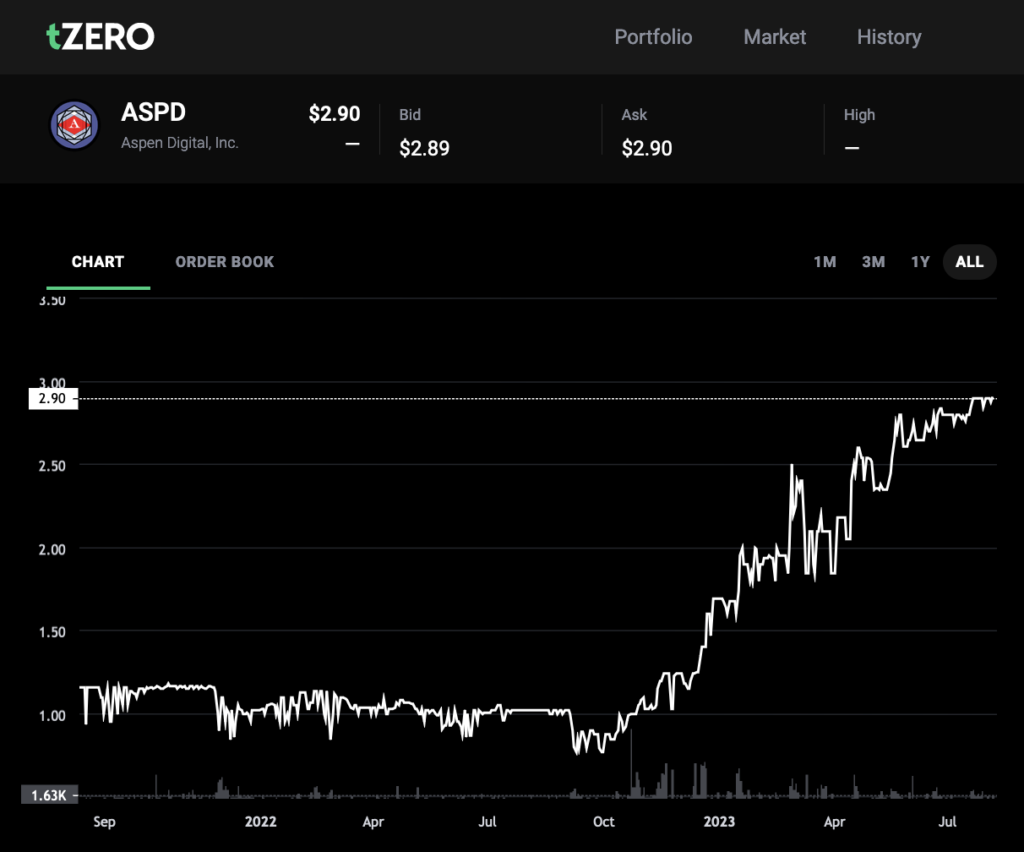Over the years, our firm has delved deep into the intricacies of real estate investment, understanding the balance between risk, reward and control. As we navigate these dynamic markets, a new trend caught our attention over a year ago: Secondary Trading on platforms like tZERO.
A prime example lies in the Aspen St. Regis Resort case study from Aspen Digital Inc. When tokenized on the tZERO platform, their shares were initially about $1.16. But by October 2022, driven by compelling financials and growth, there was an appreciable ascent in the share price, pointing towards a higher valuation. Fast forward to the present day, August 2023, and that valuation soared with the shares now priced at $2.90. For those who have been tracking its journey, this isn’t mere market volatility. It mirrors the amplified equity value of the St. Regis Resort itself.
But here’s the kicker: despite this impressive appreciation, St. Regis isn’t expected to change hands anytime soon. In a traditional real estate syndication model, this would leave investors in a static position, their gains unrealized until the property’s eventual sale or a cash out refinance.
However, thanks to secondary trading platforms like tZERO, the game has changed. Investors are no longer tethered to the whims of syndicates. Instead, they can enjoy both the paper gains and the tangible ones, translating the increased share prices into real, realized profits.
It’s an exciting time to be in the real estate sector. For us at Stone Banyan Capital, this represents not just another investment avenue but an evolution of the market itself. Secondary trading combines the solidity of real estate assets with the liquidity of share trading, empowering investors to dictate their financial journey.
In the realm of real estate investment, secondary trading is more than just a fleeting trend; it’s the future. And as we at Stone Banyan Capital always say: the future belongs to those who are prepared for it. Let’s capitalize on this opportunity together.


